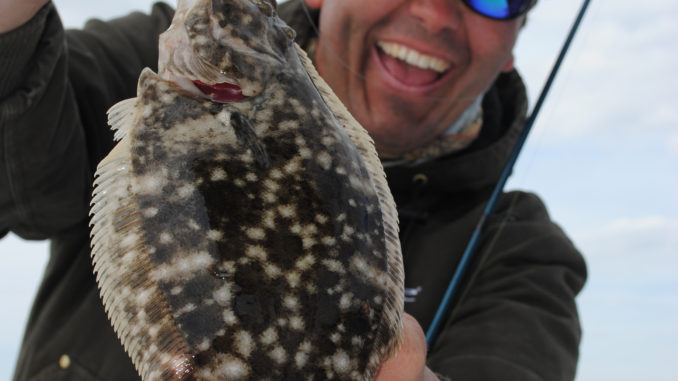
With inshore action
Fishermen are finding many places along North Carolina’s coast that spring is coming a little later than usual. After a cold, wet winter, water temperatures haven’t risen to normal levels, and fish seem to be a stage or two behind where they’d normally be found. But every once in a while, you get a good surprise.
That’s what happened one day last week Dale Collins of Bait Runner Charters and Rob Koraly of Sandbar Safaris Charters had the opportunity to carry Patrick Sebile, the owner of Sebile Lures, on an inshore trip out of Swansboro.
The two guides said that redfish are still in huge schools, hanging around in the warmest areas they can find – when normally, they’d have broken up, spread out and provided good fishing over a lot of the marsh between Bogue Inlet and Browns Inlet.
You might hunt and hunt and hunt and only find one big school of reds in a half-day trip, but when you find them, you usually do well.
That’s the way the trip got started. Koraly waited for the tide to get high enough to get back in some marsh ponds behind Browns Island, and the first place he stopped and put down the trolling motor, he found a school of about 100 reds cruising the shoreline.
Sebile’s first cast – with a Stick Shad Soft – resulted in a hookup and a 25-inch puppy drum winding up in Collins’ net. But that was it; the school made a turn around a marsh point, and before they could get back on them, a crabber came through the area, tending his pots, churning up the water noticeably and eliminating any chance of getting back on the school.
That’s when the big surprise showed up – flounder.
Back in a coastal creek, Collins and Koraly anchored up off a steep dropoff, and in a matter of seconds, Sebile put a flounder in the boat. Then another – and another – and another.
“Would you have believed we’d have caught that many flounder in here, and have two nice keepers?” Collins asked. “There won’t be as many fish back here, but the ones that are will usually be better fish.”
Many of the puppy drum that inhabit the marshes spent the winter in the ocean and well up in the brackish water of coastal rivers and streams – both places where the water was a few degrees warmer. As the water warms, they fish in the ocean will pile into the marshes, and the fish in the rivers will head downstream to the marshes. That will put an awful lot of fish in the same area, promising some great spring and summer fishing.
Flounder act the same way, Koraly said. The sub-species “southern” flounder head out to the ocean in the fall as the water temperatures start to drop, and they spend the cooler months stacked up around nearshore reefs and wrecks. The “summer” flounder that live in the flatwaters will stay there through the winter, often moving upstream along with the redfish. When spring arrives, the southern flounder head back in and the summer flounder head back out.
“Our flounder will usually start showing up here in May, and they’ll really be here in June, July and August,” Collins said.


Be the first to comment